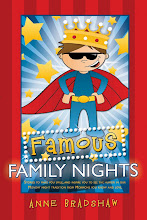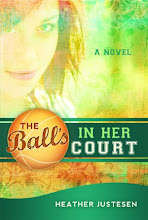by Rebecca Talley
If you’ve ever seen the movie Funny Farm with Chevy Chase, you might remember the scene on the fishing boat when one of the characters attempts to cast his fishing line into the lake. Unfortunately, he accidentally hooks one of the other occupants in the boat. When Chase’s character, Andy Farmer, provides “aid” to the injured angler, slapstick comedy follows as he tries to unhook his fishing companion. This scene illustrates an important concept in writing fiction.
The Hook.
I thought about this concept during our last family fishing trip. Many fish nibbled but weren't caught by our hooks. Other fish took a bite, but the hook was only slightly attached so they wiggled off and freed themselves. The fish that had swallowed the hook and had it imbedded deep in their throats were the ones we caught.
That’s what you want to do: catch an editor. Don’t let him only nibble at your chapter, sink that hook so deep he can’t possibly wiggle away.
Editors are busy people. Thousands of manuscripts go out to editors each year. Most editors have to read on their own time because there are so many manuscripts.
Generally, a manuscript has a few pages, sometimes only a paragraph, to entice the editor to read on. As a writer, you must hook the editor immediately.
How do you hook an editor and/or reader from the beginning?
Start with the very first sentence. Make every word count. Draw in your reader from the first few words. Play with the words until you have the finest sentence you can construct.
One of the most famous first lines is, “Call me Ishmael,” from Moby Dick.
Genius.
That line communicates a multitude of information about the character and about the story because Herman Melville likened his character to a well-known person from the Bible and those familiar with the Biblical account of Ishmael’s story know what’s in store—a perfect hook.
Pack your first paragraph with a punch. Use active words and make the reader feel as if he’s right there in your story. Don’t waste words because this may be your one and only chance to capture the reader’s interest. Make your character shine, dangle a mystery, or write crisp dialogue. This is your moment to show a potential editor that you know how to write.
Some may argue that the first paragraph should include description to set the stage while others may say that you must begin with action and still others will insist that beginning with dialogue is the only way to go. Is one way better than another? That depends on the story--ask yourself how your story begins. Different stories demand different beginnings, but regardless of how you choose to begin, make it shine.
Make the first page the best that you can. Revise it until it says exactly what you want it to say. Make each and every word work for you. Make it impossible for an editor to stop reading. Don’t give him any reason—spelling or grammatical errors, shift in POV or tense, awkward sentence construction, passive sentences— to put it down. Draw him in from the very beginning.
Generally speaking, the first few pages are indicative of the rest of the story. If they hook an editor, chances are he’ll read the rest of the chapter and will be much more likely to keep reading. Don’t leave your best writing for the end of the book. You must begin strong to keep interest.
Don’t confuse your hook with your story question. They may be one in the same, but the hook is designed to compel the reader to keep reading beyond the first chapter. Whether it’s discovering a dead body, finding a mysterious object, or meeting a creepy character, you need something compelling enough in your first chapter to convince an editor to turn the page. It’s also a good idea to tie your hook to your story question.
Of course, the rest of your story will have to follow the dynamic first chapter, but the more you can pack into your first chapter, the better chance you have of keeping your readers. Never underestimate the power of the hook.
(This is an excerpt form my ebook Hook Me: What to Include in Your First Chapter. If you'd like to read the rest, it's available at Amazon or Smashwords for $0.99).
Thanks!
Tuesday, August 9, 2011
Your First Chapter: The Hook
Posted by Rebecca Talley at 11:25 AM
Labels: First Chapter, The Hook, writing fiction, Writing Tips
Subscribe to:
Post Comments (Atom)

















0 comments:
Post a Comment